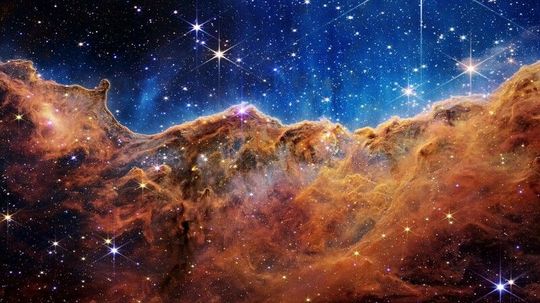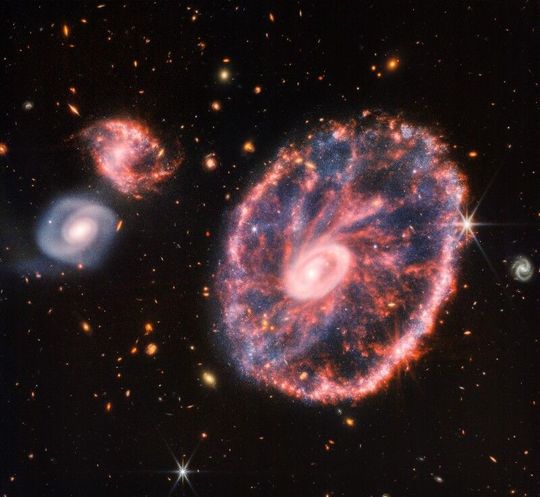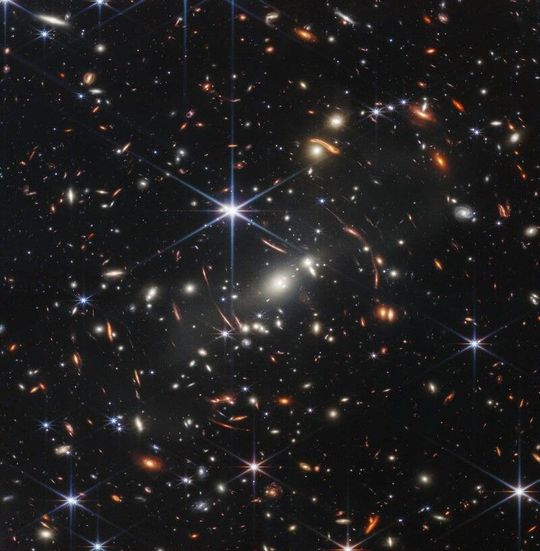People have always been curious about the world in outer space, and I am no exception. When I was a child, I was very moved when I saw the Hubble Space Telescope or some satellite images taking gorgeous interstellar photos.
Some images from the Hubble Telescope can be seen here.
As the successor, the Webb telescope was launched on Christmas Day 2021. After about half a year of adjustment, it finally began to take pictures one after another and sent them back to the earth. Share it with everyone.
Webb Telescope Introduction and Mission Objectives
From the very beginning, the project of the Webb Telescope was intended to continue the space telescope mission of the Hubble Telescope, so it was slowly started in the 1990s, but the process was twists and turns, and it was not restarted until 2005 due to insufficient budget. The plan was started, and the construction was officially started in 2007. The mechanical structure of the entire telescope was completed in 2019, which was 12 years later than the earliest scheduled completion in 2007. The total cost fell about 10 billion US dollars, which is about 2003. It is 14 times that of the Zhe Space Telescope, 18 times that of the Kepler Space Telescope in 2009, and 50 times that of the Transiting Exoplanet Survey Satellite in 2018. The Webb telescope is much more expensive than other telescopes with different objectives.
Even after so long and spending so much time building, the final review still found that there were 344 potential single points of failure. That is to say, after the telescope was launched, as long as something broke in these 344 parts, the tens of billions of The telescope becomes scrap metal. However, it was launched on Christmas in 2021. After several months of deployment and mirror adjustment, it was finally successfully deployed in March of the following year, and photos can be taken normally and sent back to the earth. The first batch of photos was also announced in July. astronomical photo of nebula.
The core goal of astronomers for it is to be able to explore the first generation of galaxies formed after the Big Bang created the universe. In addition to exploring ancient galaxies, they also hope to explore a planet with surface gas similar to the atmosphere of the earth outside the solar system. If it can be found, it may indicate that other life forms exist here.
The Webb telescope uses infrared light to observe the universe, and infrared light has a strong penetrating power to reduce the influence of dust and gas in the universe, which makes it easier to observe the darker, cooler objects in the universe. With its powerful ability, it can see much deeper and farther than all previous telescopes. People also hope to use its power to study and simulate the formation and evolution of galaxies, as well as to understand star formation and planetary systems. Formation, these all help us to better understand the universe.
Launch destination and mission length
The “location” of the telescope is very important. If it is like the Hubble Telescope in a low orbit about 600 kilometers above the surface, even if the telescope fails or you want to upgrade the equipment, you only need to send a space shuttle to find someone to repair and maintain it. However, the Webb telescope chose a more distant second Lagrangian point between the Earth and the sun (the Sun-Earth system), which is about 1.5 million kilometers away from the Earth, and it is impossible to dispatch repair personnel even if it fails.

The so-called Lagrangian point refers to the point at which the small object can be stabilized under the gravitational action of the two major objects. There are generally five points, and the things near these five points are affected by the two major objects, the sun and the earth. The gravitational traction of the celestial body can maintain a constant position relative to the adjacent celestial bodies, and it is fixed to maintain the relative position between the sun and the earth to revolve. The advantage is that it does not need to perform frequent position corrections, which can save a lot of unnecessary fuel consumption.
The second Lagrangian point (L2), where the Webb telescope is located, is on the other side of the earth facing away from the sun. Since the Webb telescope is an infrared telescope and also has many microwave devices, it needs relatively low temperature to reduce interference. The advantage here is that in addition to avoiding a lot of sunlight, the distance from the earth is far enough and it is less likely to be polluted by the infrared light of the earth itself.
Since the Webb telescope still needs power supply, it will not be completely in the L2 position, but will make a detour to allow the solar panel on the back to have the opportunity to illuminate the sunlight to generate electricity, which makes its mission time. Capped, when the day comes when the fuel needed to maintain orbit runs out, it’s time for it to end its life and end its mission.
The mission time is initially set for five years. The goal is to hope that it can support the amount of propellant carried by itself, which is about ten years. It is expected that the Webb telescope can continue to bring more surprises to our space fans in the next ten years. Photos and new discoveries!
some photos
Finally, here are some photos of the Webb telescope returning to the earth, you can also go to NASA’s official website or Instagram official account to see more.





Finally, thank you for taking the time out of your busy schedule to read my articles. If you still like these content, I hope to get your follow-up and small sponsorship support, which will give me more motivation to continue writing. EVM compatible wallet The address is 0xae1dd06d57f582999a9c50b86ba913eecd7155ce.
Also welcome to join the Line community or Telegram group to discuss related topics
See you next time o((>ω< ))o~
Original link ITechNote technology essay
![[Technical Essays]James Webb Space Telescope – Technological Essays (@itechnoteco) [Technical Essays]James Webb Space Telescope – Technological Essays (@itechnoteco)](https://assets.matters.news/embed/781562da-a605-4d88-89ad-bb8f8ff84b8f.jpeg)